Information Security Management Systems
Protecting your Information Assets
ISO/IEC 27001 is the world’s leading standard for information security management systems (ISMS). It provides organisations with a framework for managing their information security risks and ensuring the confidentiality, integrity, and availability of their information assets.
What does an ISMS achieve for your organisation?
- Increased customer confidence: Your organisation will be perceived as trustworthy in the protection of confidential customer assets when provided to you.
- Reduced risk of data breaches: You’ll spend less time having to respond to incidents and other events that impact your operations and performance.
- Improved compliance with regulations: It is expected that the costs of regulatory non-compliance in this area will only increase.
- Enhanced operational efficiency: The establishment of specified processes and controls will ensure that you’re not wasting time and precious resources to manage your information.
- Increased employee awareness of information security: Your people will have a better understanding of the role that they play in protecting your information assets and operations, and how to contribute to ongoing improvement of your ISMS.
What is involved in developing an Information Security Management System?
- Define the organisational context, and ISMS scope: Before you do anything, clearly identify and define the scope of your planned ISMS, including locations, functions, external providers and information types.
- Establish high-level policies and processes for the ISMS: The highest-level document for your ISMS is the Information Security Policy, which sets out your commitments and the intent of the ISMS. You will also develop and document your Risk Management Methodology to guide the assessment of information security risks.
- Identify information assets, and assess information security risks: You will identify the organisation’s information assets, and assess the potential impacts on these from threats and vulnerabilities should you experience a security breach.
- Select and plan your information security controls: Annex A of ISO/IEC 27001 provides a suite of 93 controls that you can choose from in the development of your information security controls, which are captured in your Statement of Applicability. These are categorised as; organisational controls (37), people controls (8), physical controls (14), and technological controls (34).
- Develop information security policies and processes for your controls: With your information security controls selected, your Risk Treatment Plan will outline the control-specific policies, procedures and plans necessary to support their implementation. Guidance for the development of the 93 Annex A controls is provided in ISO/IEC 27002 (Information security, cybersecurity and privacy protection – Information security controls).
- Implement your information security controls: With your policies and processes now ready, the next step is to prioritise and implement these on the basis of the degree of risk that they will mitigate.
- Review and improve your ISMS: You will need to regularly review your ISMS to ensure that it is still effective in mitigating the organisation’s information security risks. The ISMS will also need to be improved as new risks and threats emerge (nothing ever stays the same).
Like to read more? Have a look at our blog post that discusses ISO/IEC 27001, and how to approach your ISMS project. If you are interested in learning more about developing an ISO/IEC 27001 Information Management System, or how to achieve certification, please contact DBell Consulting today.
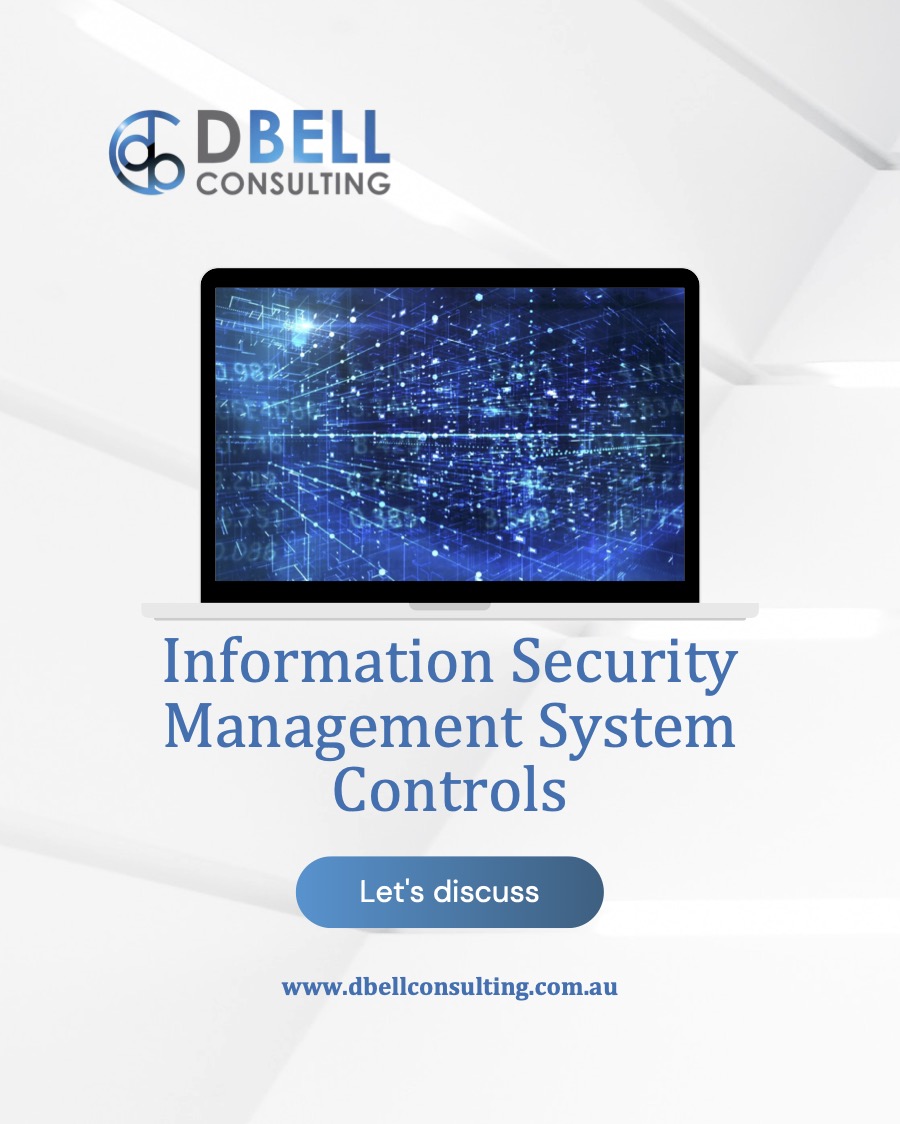

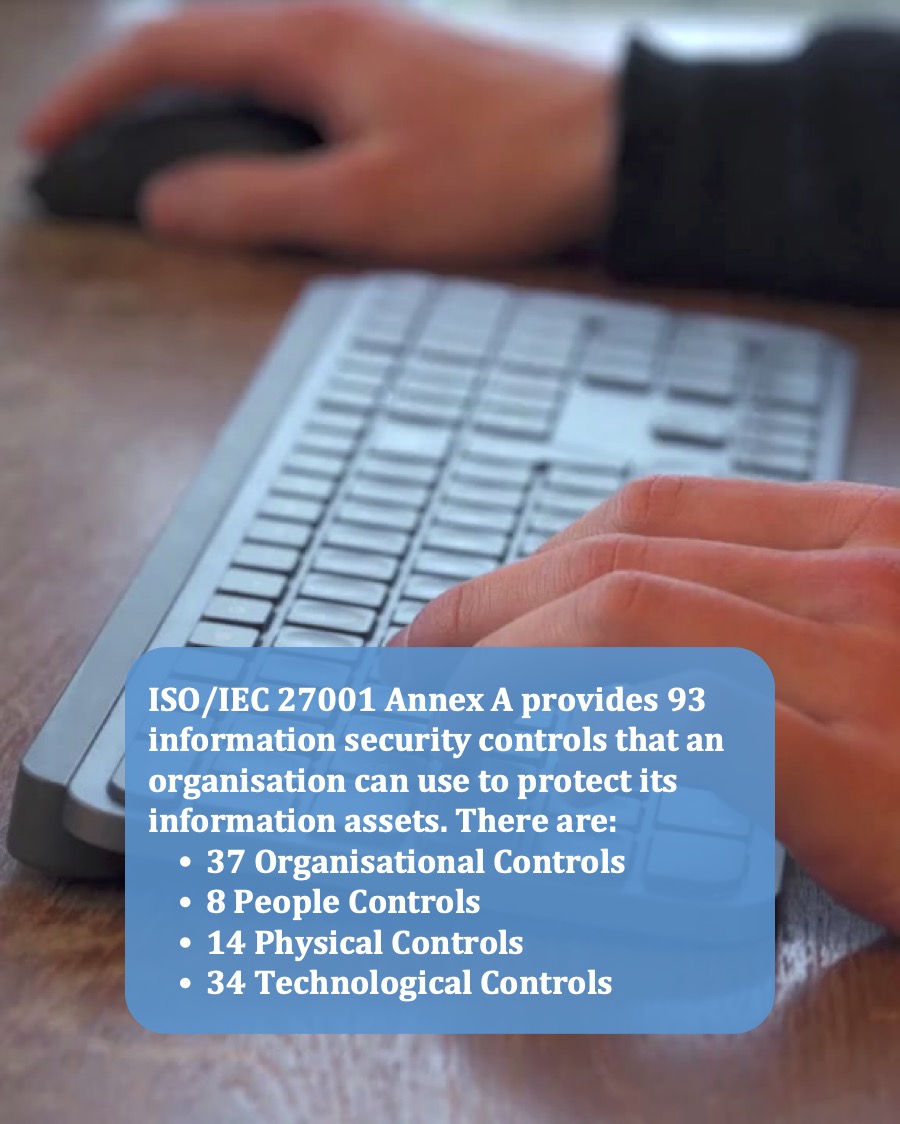
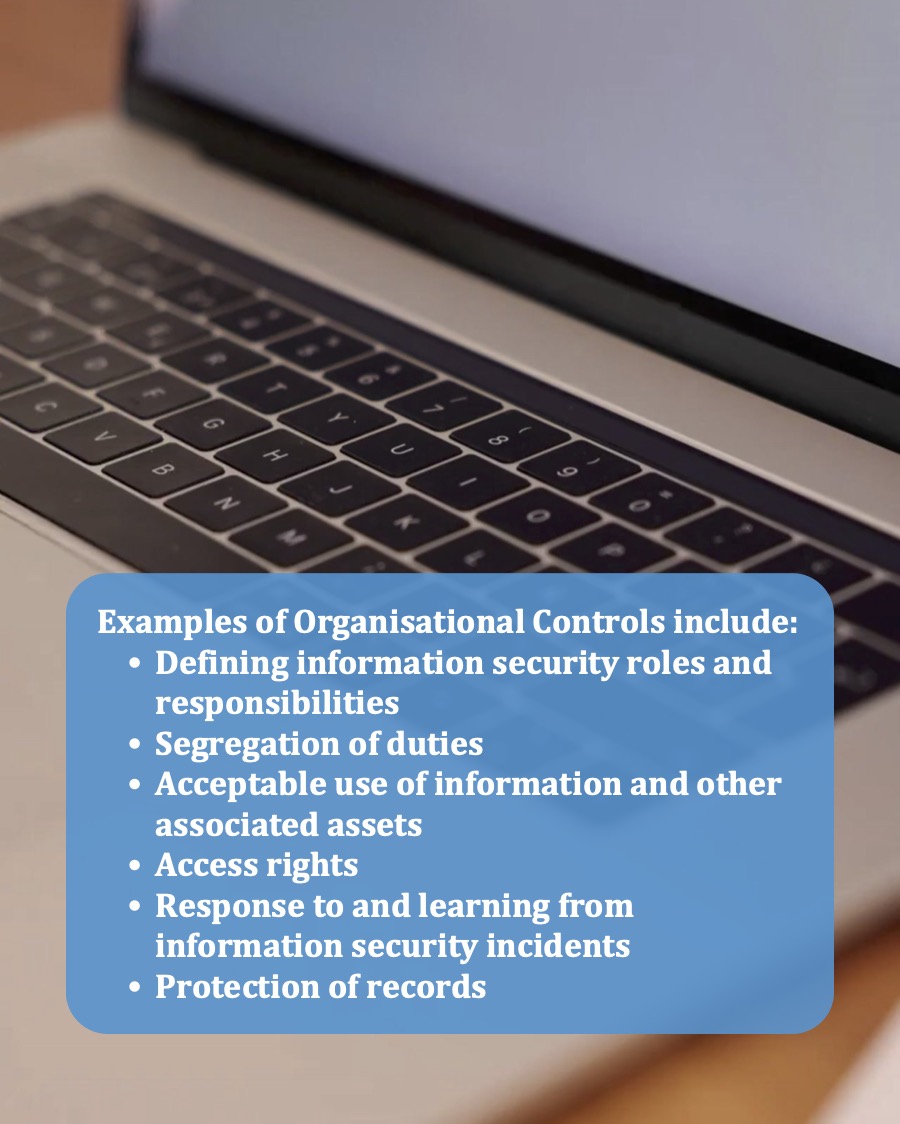
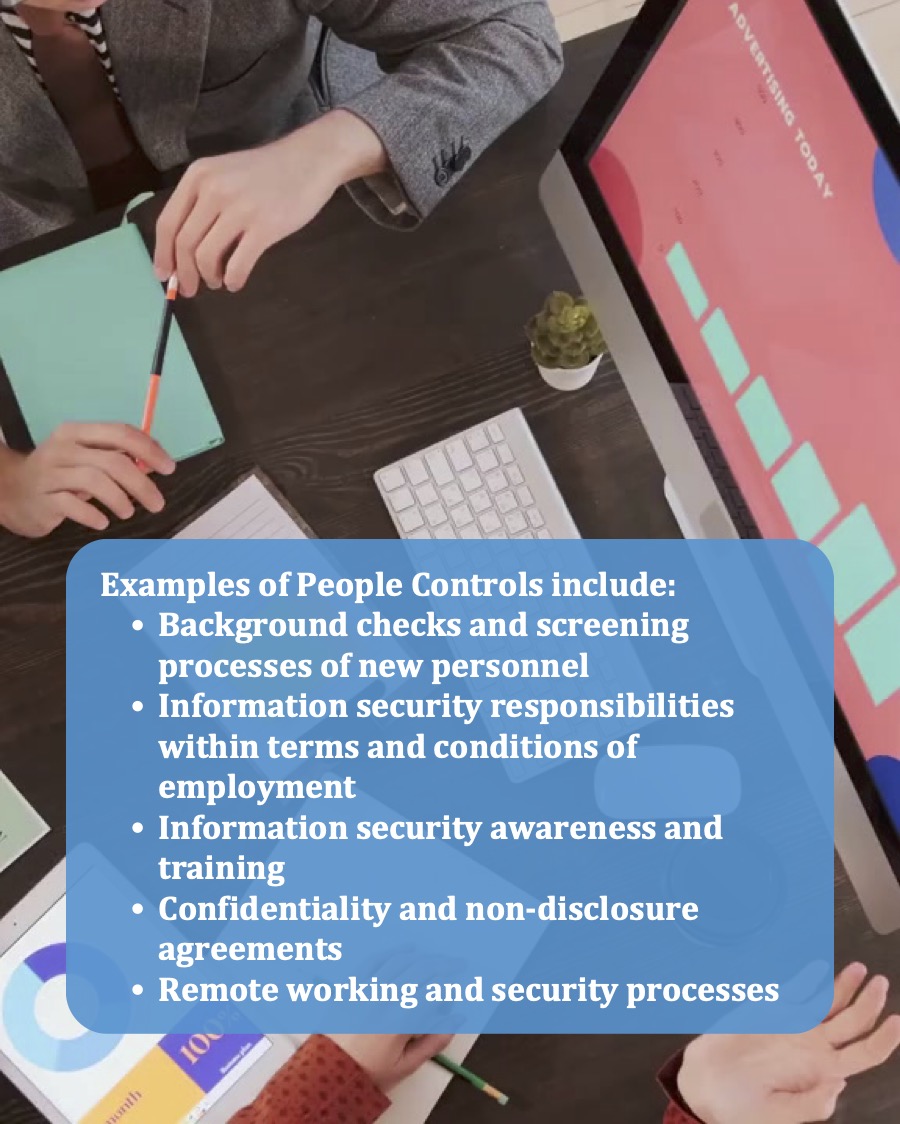


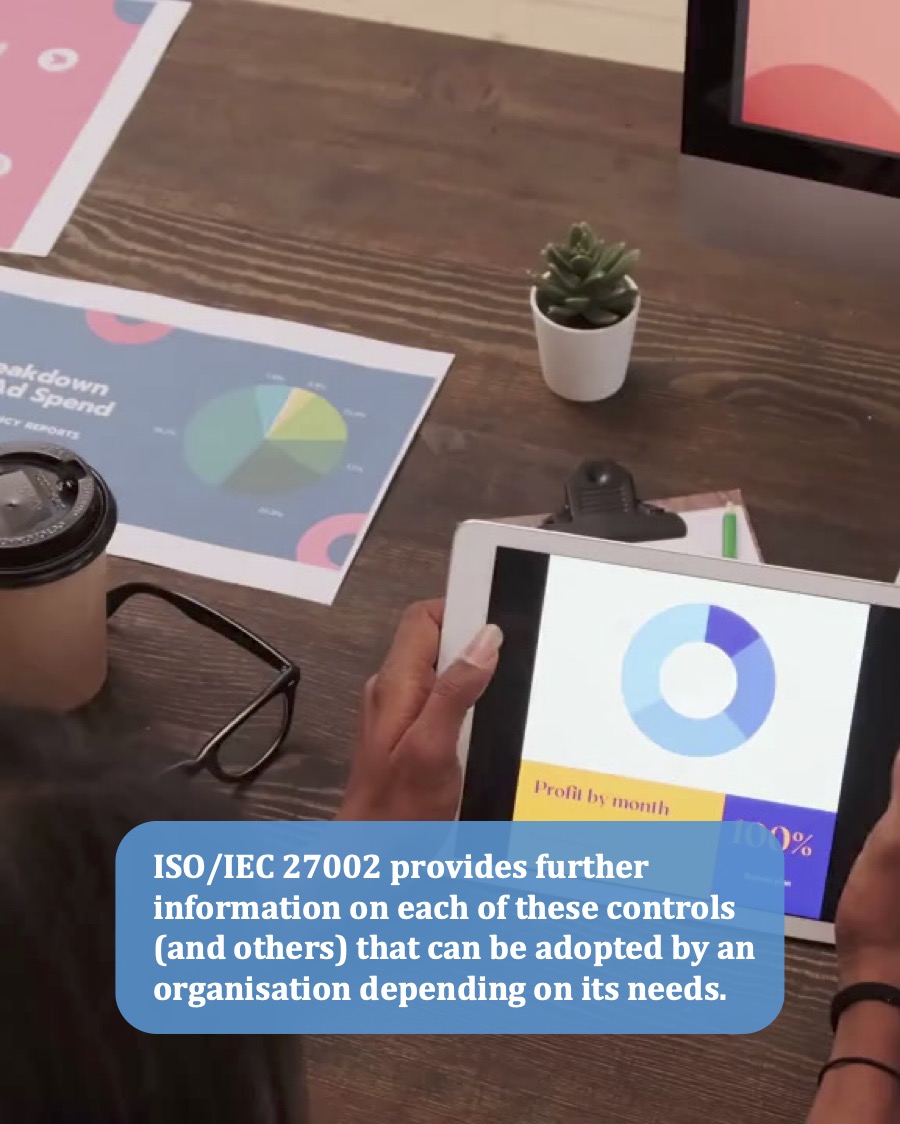
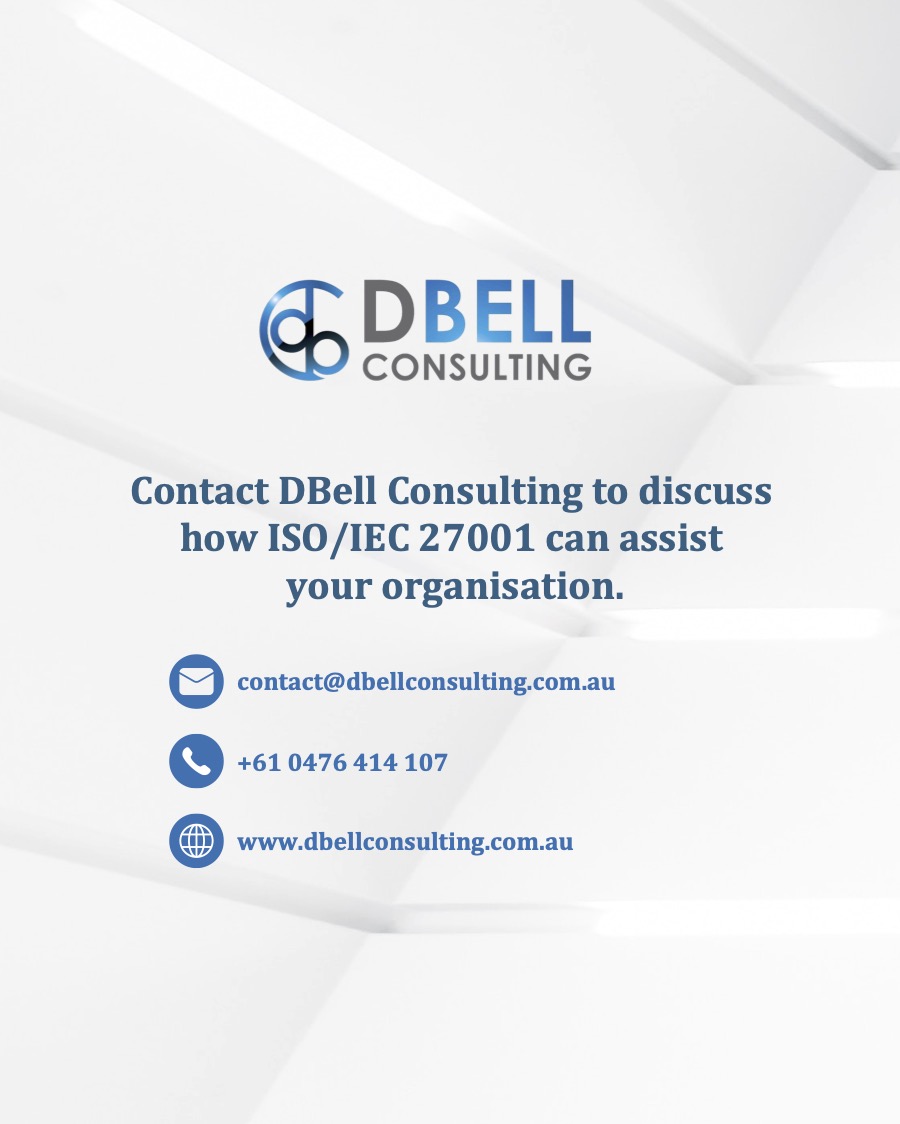

HSEQ Management Services
Are your operational and risk management systems effective in helping you to win new work, maintain work standards and prevent adverse outcomes?

ISO Compliance & Certification
Are you moving towards ISO certification? We can guide your preparation, right through to supporting your certification audit.

Lucidity HSEQ Information Management
DBell Consulting provides solutions tailored to your organisation and sets you up for ongoing success with Lucidity Health & Safety software.

Information Security Management Systems
Do you need confidence that your systems, policies and controls are effectively protecting the confidentiality, integrity and availability of your information assets?

On demand HSEQ Specialist
Need occasional support of an experienced HSEQ Manager? Call us to discuss a tailored approach to your needs – as much or as little as required.

Audit Services
Are you confident that your business is compliant with legislation, industry standards, or even your own policies? An independent compliance audit can provide you with that assurance.

Bid & Project Support
We’ll help to clarify tender and project requirements, develop project HSE & QA Plans, Document Control, Sub-contractor due diligence and project compliance audits.

Investigations & Injury Management
When incidents and injuries do occur, the quality of a post-incident investigation, and the manner in which you support an injured worker will determine the human cost and operational disruption.
